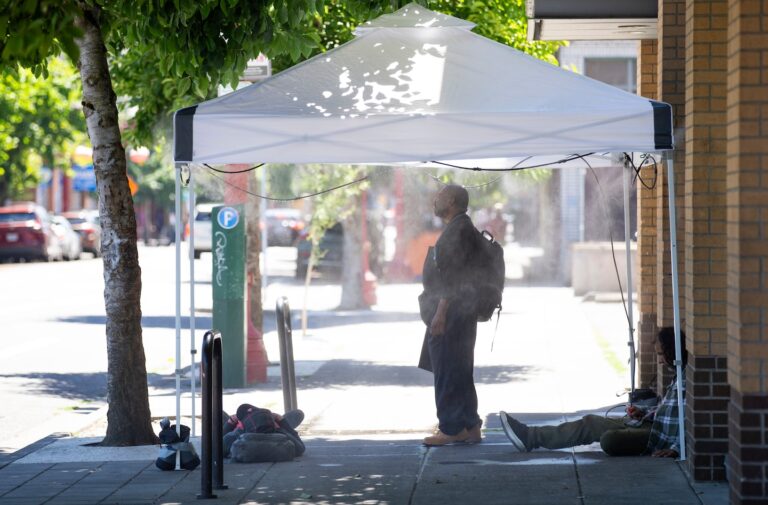Most of the deaths were reported in California, where several major cities, including San Jose, Fresno and Oakland, broke daytime heat records over the weekend. In Santa Clara County, which includes San Jose, Chief Medical Examiner Michelle Jorden said she was investigating 14 deaths that appear to be heat-related causes.
Jorden said eight of the people who died were over 65 and most were found in their homes, two were homeless and one was living in temporary housing.
“The thing I want to emphasize is that these cases are still under investigation,” Jorden said, adding that it will probably take days or weeks to determine the death toll. Right now, the death toll in the region is not high, but “clearly, we’re going to be hit with another heat wave over the next three days,” she said.
Adding to California’s death toll, a man riding a motorbike in Death Valley National Park died of heatstroke on Saturday as temperatures soared to 128 degrees Fahrenheit. Also that day, a woman incarcerated at the Central California Institution for Women died as temperatures reached 110 degrees Fahrenheit in the Central Valley, where the prison is located. Local authorities question whether the woman’s death was caused by the heatwave, but her daughter told the Sacramento Bee that she had been complaining of extreme heat in the prison for years. On Sunday, a 58-year-old Sacramento man died of heatstroke after being rushed to a hospital from his unair-conditioned home.
In Oregon, as temperatures continue to reach triple digits every day, deaths from heat stroke appear to be on the rise.
The Oregon State Medical Examiner’s Office released information on 10 victims who are suspected to have died from heatstroke on Wednesday afternoon. Six of the victims were in the Portland, Oregon, area, and the other four were in Washington, Coo, Klamath and Jackson counties. Half of the victims were elderly, while the rest were younger. The victims included two 33-year-olds and one 27-year-old, all males. The medical examiner’s office did not provide details about the circumstances or time of their deaths.
In Arizona, NPR affiliate KJZZ reported that a 4-month-old girl became unresponsive and died while boating with her family on Lake Havasu on July 5. A spokesperson for the Mohave County Sheriff’s Department told the station that the girl had suffered from heat stroke.
Hundreds of heat records have been set in the U.S. since the start of July, especially in the Western United States, where temperatures were so high that some rescue helicopters couldn’t fly because the thin air made it difficult for helicopter blades to grip the ground.
The heatwave did not escape the East Coast, where Raleigh, North Carolina, recorded a record high temperature of 106 degrees Fahrenheit on Friday. In Maryland, the state health department reported two heatstroke deaths in the week from June 30 to July 6.
The total death toll from the heatwave may remain unknown for a long time, and public health experts have warned that the official death toll is likely an undercount.
Heat is the leading cause of weather-related deaths in the United States, killing more people than hurricanes, tornadoes, and wildfires combined, but researchers, coroners, and clinicians are still trying to figure out how to accurately count the toll. Heat-related deaths aren’t always obvious; heat-related causes are often overlooked and classified as heart failure or other cardiovascular diseases.
In several states, including Washington, North Carolina and South Carolina, where residents have suffered from extreme temperatures in recent days, officials said they had not received any information about heatstroke deaths at this time. California’s Department of Public Health was not able to provide an estimate of the number of suspected heatstroke deaths statewide as of press time.
According to federal data, heatstroke deaths in the United States have risen steadily in recent years and are expected to exceed 2,300 in 2023. Nearly 1,600 heatstroke deaths occurred in 2021 and nearly 1,700 in 2022.
Ashley Ward, director of the Heat Stroke Policy Innovation Hub at Duke University, said the reporting and classification of these deaths is showing signs of improvement. She said it used to be very hard to get the public to pay attention to the dangers of heatstroke, but that’s changing.
“The heatwaves we had last summer and this summer were enough to worry everybody, including the people who are responsible for classifying health and mortality rates,” Ward said. “Perceptions are changing.

